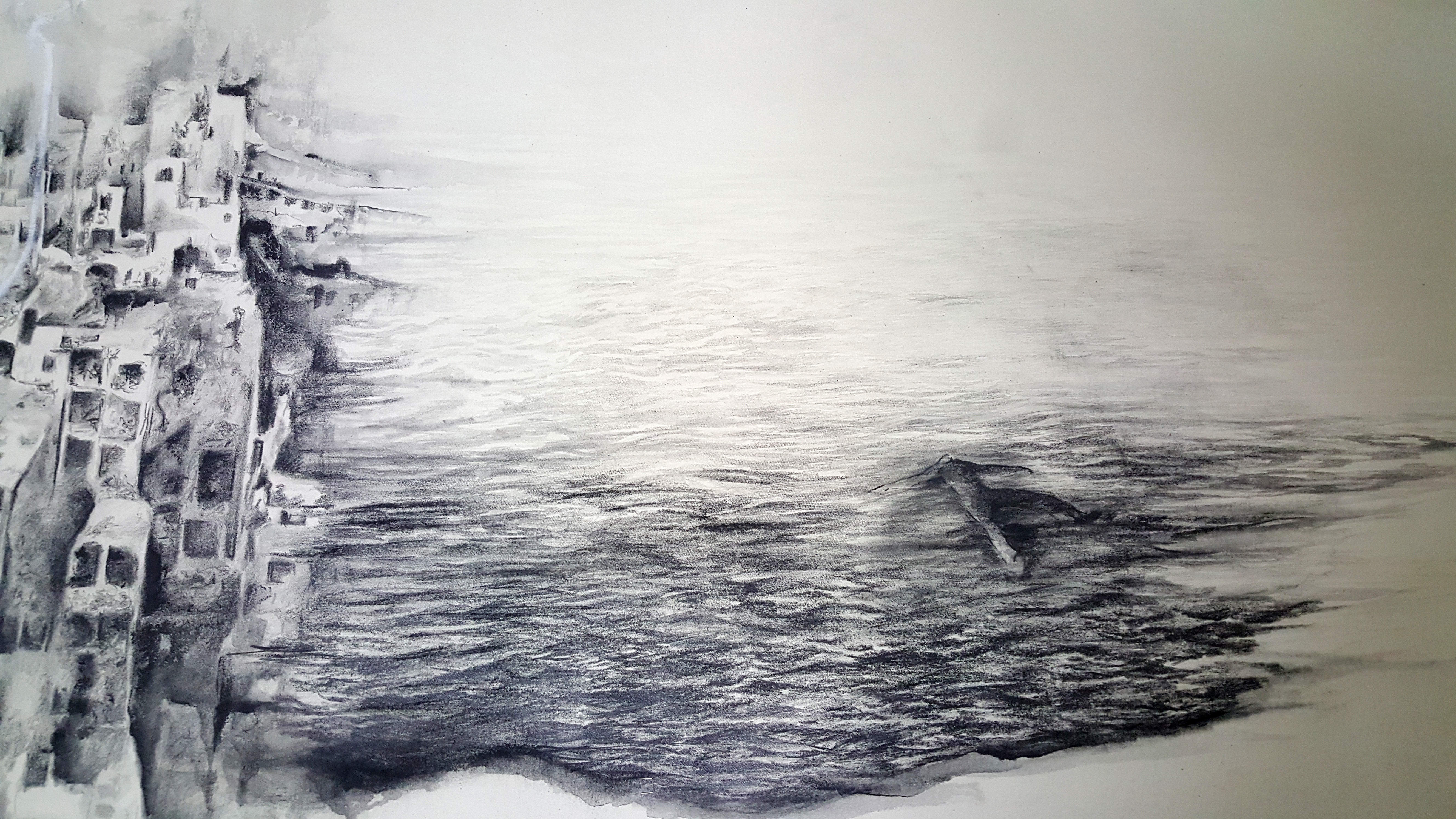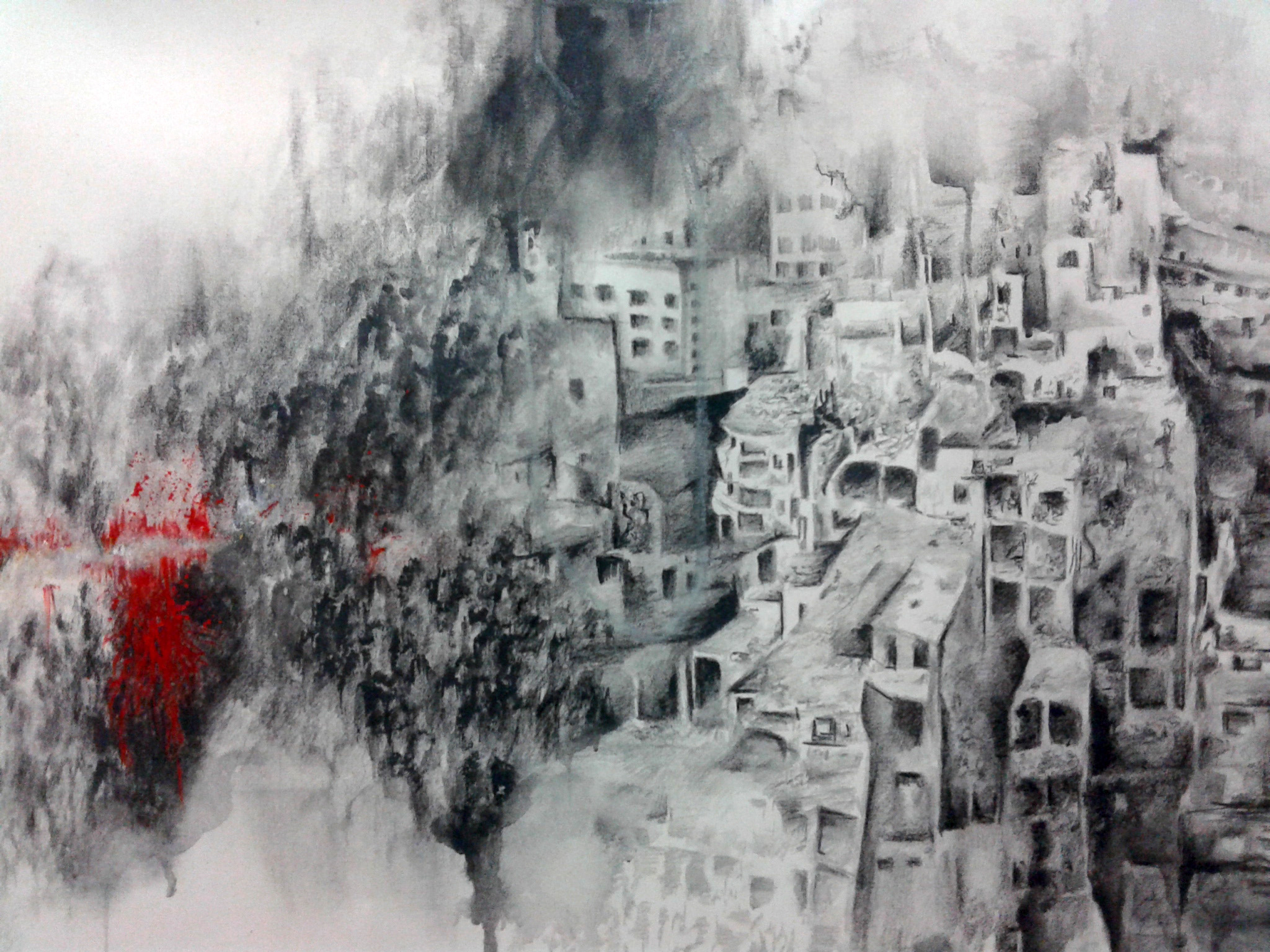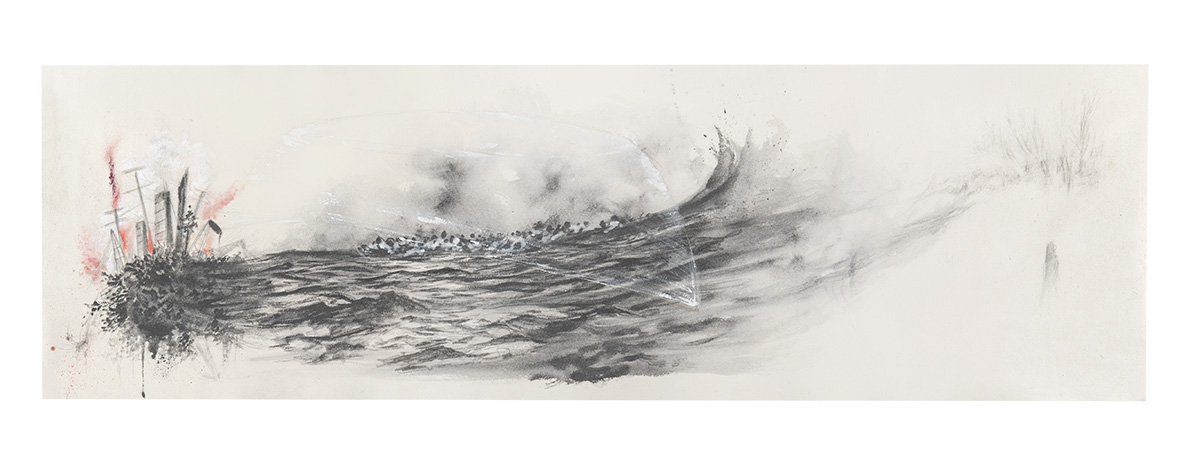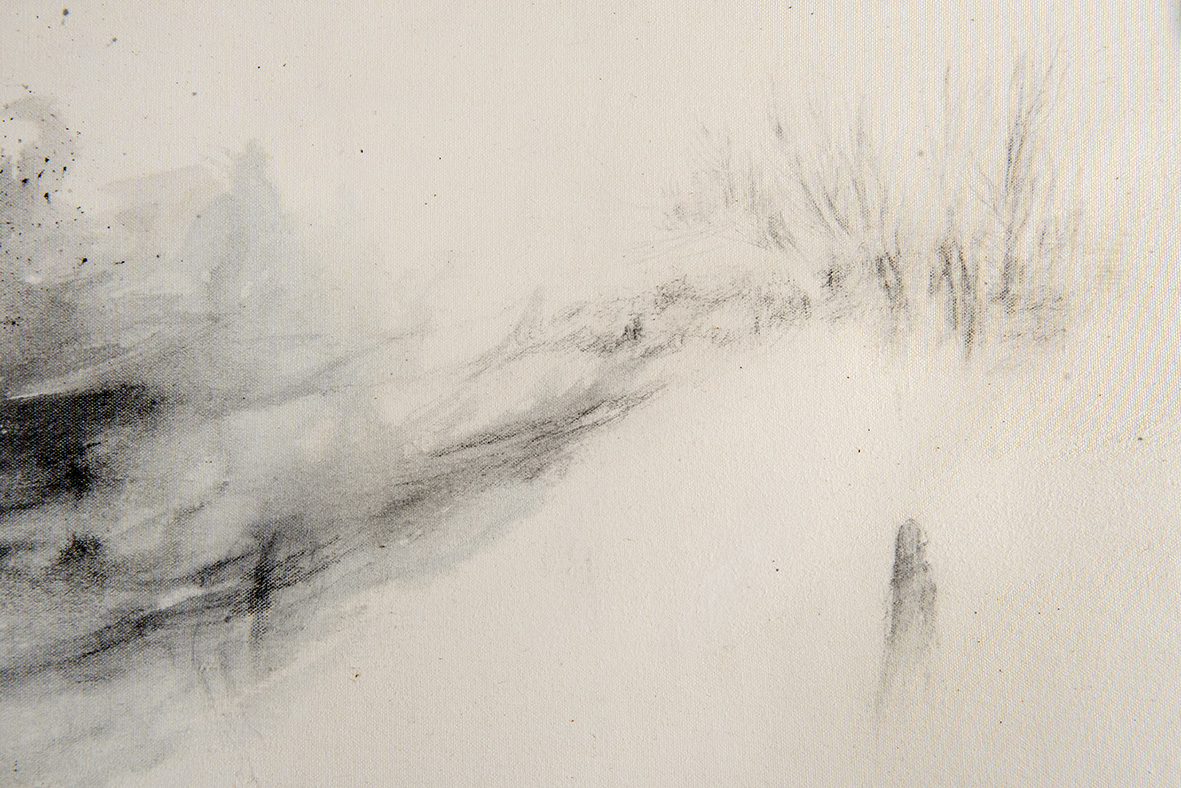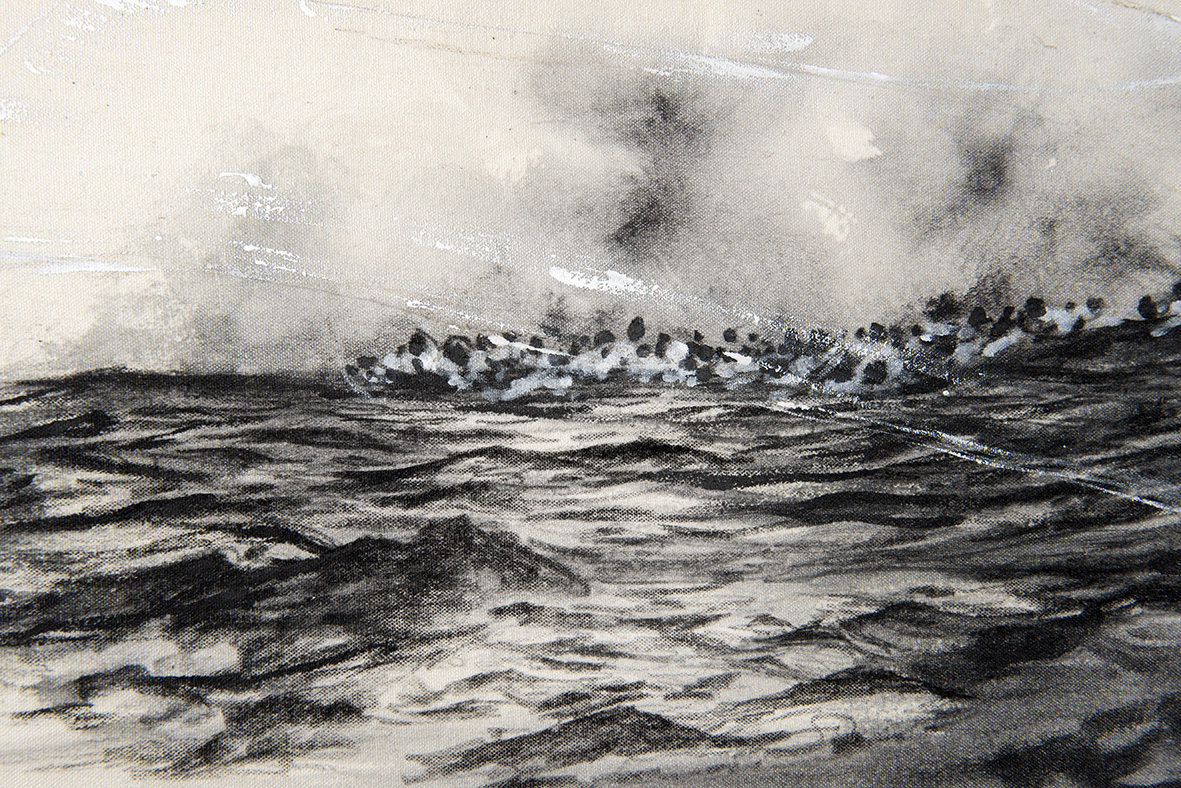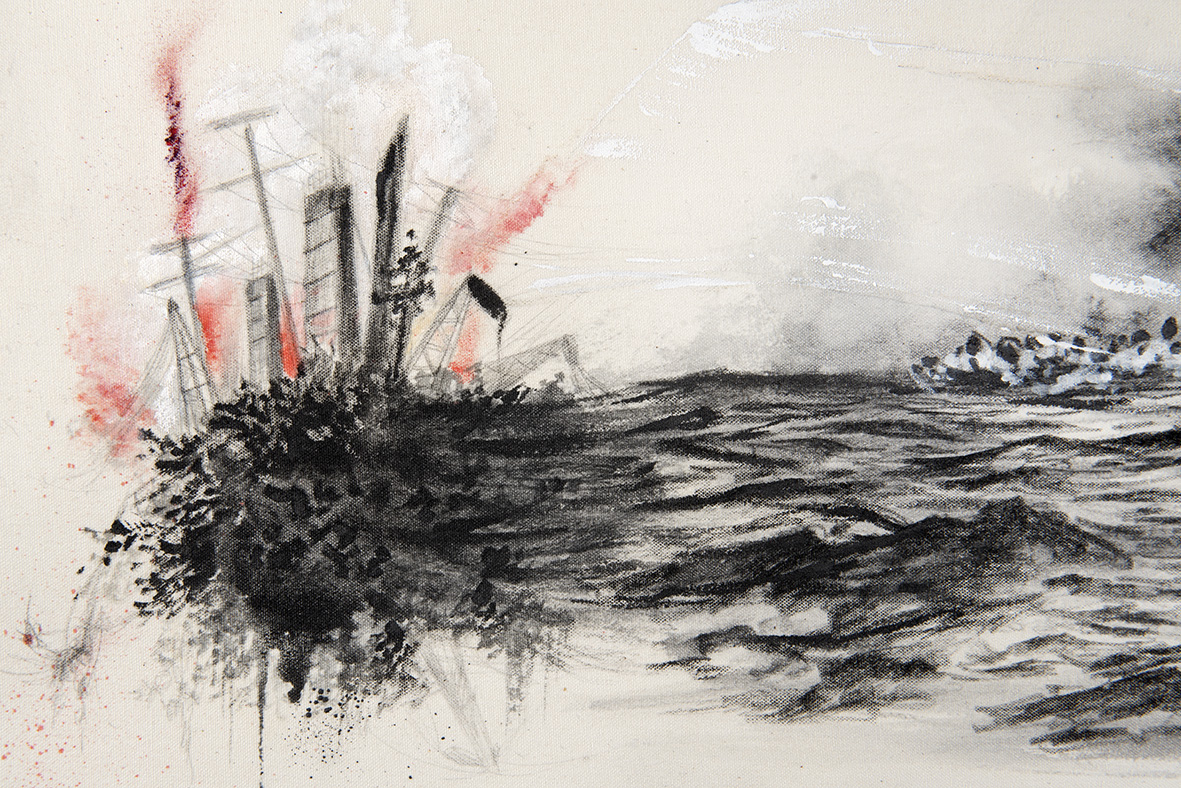The Catastophe Equivalence ( Theory ) shows the unambiguous sign that each catastrophe is not unconnected from the other because links and intricacies even of economic, financial and political nature are so many to draw the perimeter of a civilization crisis much more disruptive and radical compared to the previous ones. From J.Luc-Nancy
CONCATENATIO
These works, where an interlocking sequence of destructions follow one another and get tangled as to nearly form an only new “shape”, arise from the vision of different printings and engravings representing the earthquake of Lisbon in 1755 and more. The XVIII century is remembered as one of the most disastrous in the European History, strike by a long series of natural catastrophes, plagues and famines which provoked thousands of deads across the whole continent. Some of the most disastrous earthquakes, which have ever striken Europe and part of the Mediterranean area, including Italy, concentrated just in this century. However they arise, above all, from the illuminist Rousseau’s reflections, who holds that revolution and catastrophe intertwine, up to Kant whose interlocking sequence of catastrophes are provoked by the man’s convergent and persistent actions, to Leopardi, to Foucaul with his Ontology of present and Jean Luc Nancy with his Equivalence of disasters - after Fukushima.
A catastrophe is a breakthrough The change, the sudden breakdown of an order, of a form, not necessarily brings to its end; instead this changing sometimes is the readjusting of a form to a new one. A change, an event which brings us to think not only over the reasons and the happening itself , but even more over the emptiness undermining our certainties, the sense of the present and its current events, the concept of humanity. The threat of an imminent apocalypse appears as a deep feature of our civilization whose loss is nearly total and definitive. And a feature, in some respects unedited and disturbing of our era, is the equivalence between natural , nuclear catastrophes and the civilization ones, tightened in one single and tangled Sintagma. What happens nowadays? What’s happening now? The word NOW includes all of us. Having a sense of the present, a direct touch with the world because with the catastrophic event follows the strengtening of the word US , the identity of those of us who survived , us spectators of this show full of pathos we somehow become also interpreters of. Paradoxically a catastophic event , in its different forms and expressions , seems to strenghten the collective awareness but above all becomes the permanent background within which all of us get around nowadays. We are living in a period when the accident is overall, systemic, globalized, a disaster degenerates producing a chain of disasters , but this globalization cancels space and time distances so that nowadays we take part in what happens despite us.

